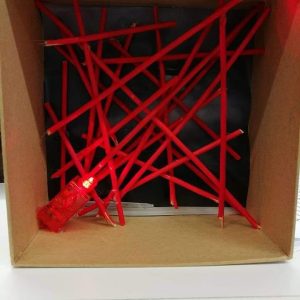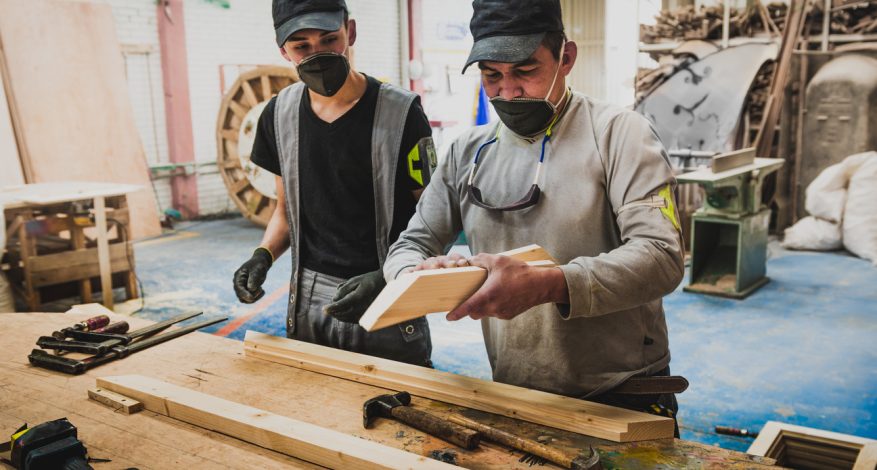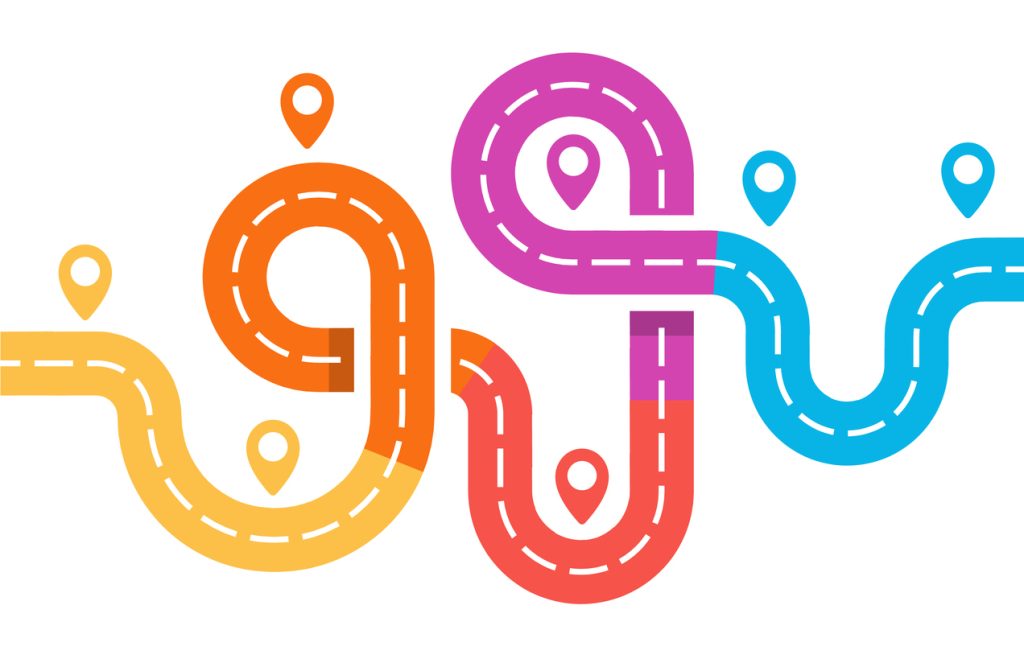‘You didn’t just make pizzas!’ Resume writing and career mindsets for WIL students
Students can prepare for their future careers by first reflecting on their past
Dustin Edwards and Frederick Mills
 Every fall at the University of Alberta, roughly 500 second-year engineering students enrol in ENGG 299: Introduction to Co-operative Education. This course is a mandatory, for-credit “bootcamp” designed to help students develop their job-ready skills in preparation for their first work placement. But this course isn’t just about getting a first job. It is also a rare opportunity for students to pause and think about what it will take to succeed in the rest of their careers.
Every fall at the University of Alberta, roughly 500 second-year engineering students enrol in ENGG 299: Introduction to Co-operative Education. This course is a mandatory, for-credit “bootcamp” designed to help students develop their job-ready skills in preparation for their first work placement. But this course isn’t just about getting a first job. It is also a rare opportunity for students to pause and think about what it will take to succeed in the rest of their careers.
How can work-integrated learning (WIL) professionals prepare and empower students to enter their work placements successfully, and also feel ready and excited for the twists, turns and lifelong growth that will define their future careers? Bringing the concept of career mindsets directly into the resume preparation process can be an important first step.
A career mindset means that students aren’t just thinking about what it will take to get their next job. They are thinking about who they already are, and who they might grow to become over the course of their working lives.
However, career mindsets are not just forward looking. For early stage WIL students, developing a career mindset can involve reflecting on their work histories, achievements, interests and skills. Students feel empowered knowing that they have already been accumulating experiences that will contribute to their careers, while employers will be better able to recognize students’ potential. “You didn’t just make pizzas,” we recently told one of our students, who was struggling to identify the value of their past employment experiences. “What did you really do?”
Using resumes as a tool for career mindset development
Nearly 40 years of scholarship has consistently demonstrated the relationship between lifelong learning, intellectual agility, motivation, and personal and professional success (Elliot & Dweck, 1988; Dweck, 2008; Yeager & Dweck, 2012). A recent study predicted that 85% of jobs that will exist in 2030 have not yet been invented (Institute for the Future, 2017). Innovation, growth and flexibility are the watchwords of labour markets that are in continuous flux.
Graduates in engineering, as in many other professions, need career mindsets centred on flexibility, resilience and creativity. Academic training alone can’t guarantee the trajectories of their future careers. Students need to be ready to leverage skills that may not seem immediately obvious, and practise seeing themselves as adaptable lifelong learners who will only continue to grow.
Co-op students implicitly understand this. As well as classroom training in math, mechanics and materials testing, students complete 20 months of paid work experience that will require them to try different jobs and work with different teams, building a variety of skills for the long term. Students recognize that they will need to be capable and future-oriented, with an existing slate of skills and the potential to develop further.
Through the resume review process in ENGG 299, we take this implicit understanding of the importance of career mindsets and make it explicit. How do we do this?
- Stressing the importance of transferable skills
In contrast to technical skills, transferable skills can be defined as those skills that are job related, but not job specific (Chadha & Lewis, 2006). For our young pizza chef, creating a first-rate resume involved asking them to think holistically about what transferable skills they gained from that role. Knowing how many pepperonis go on an extra-large pizza pie was secondary to the sound communication and teamwork skills, time management and safety knowledge required to do the job well. We invite students to consider their past experiences and accomplishments through the prism of transferable skills.
Read more
Cultivating career mindsets in graduate education
Client Side: You don’t need an ‘in-demand degree’ to be successful
An exploration mindset can help ease students’ anxiety about their future
The benefits to students and employers are manifold. For students, the language of transferable skills is empowering and future-focused, and this mindset will serve them long after they graduate. It also acts as a potent tonic against imposter syndrome, self-doubt and feelings of unworthiness. For employers and HR professionals, resumes that use statements and action verbs grounded in the syntax of transferable skills allow those professionals to better understand students’ experiences, their potential and the value they could bring to a position.
If the jobs of tomorrow have truly not yet been invented, an emphasis on transferable skills in resume writing for early-stage WIL students is critical. This emphasis helps students secure meaningful co-op positions now, develop and enhance transferable skills for later, and gain the invaluable technical knowledge necessary to thrive in the job market of the future.
- Considering graduate attributes
For our early stage WIL students, a resume that effectively communicates transferable skills is a must. Yet, not all transferable skills are created equal. Students need to be savvy about which skills to prioritize in order to succeed in their desired field. Engineers Canada cites the importance of lifelong learning and professional development, equity, and economics and project management for engineering students. To thrive as engineers or beyond, students need to recognize when they already have these skills and the necessity of developing them further.
The ENGG 299 resume exercise is a key place to help students build this career mindset. As they prepare their resumes, we ask students first to consider the attributes and skills that engineering graduates need. These often go beyond technical skills for specific jobs and instead get at the qualities required to succeed in life-long careers. Students identify attributes such as flexibility, leadership, intercultural understanding and business acumen. Then, we ask them to identify the attributes and skills they already have, and those that need further development.
“Students need to be savvy about which skills to prioritize in order to succeed in their desired field.”
This approach of embedding career mindsets into resume writing can also work in other fields, as students can articulate where they have been and how this relates to what it takes to succeed in their desired careers.
Conclusion
The novelist and poet George Eliot once purportedly quipped, “It is never too late to be what you might have been.” With apologies to Ms. Eliot, it is also never too late to be what you already have been. You simply need to realize it.
Career and growth mindsets can help make this realization manifest. For students at the start of their professional journeys, with seemingly little relevant experience, having a career mindset will not only help them secure their first professional job, but also prepare them for life-long growth and adaptability. By refracting their past work experience through a career mindset lens, students can identify what skills they have and in what areas their skills could be further developed. By thinking in terms of transferable skills and graduate attributes, students can focus on building career trajectories that embrace lifelong learning informed not only by where they would like to go but by where they have already been.
The resume is a key site where career professionals can nurture career mindsets in students. Our once pizza chef may never make another pizza. But a career mindset will help them re-interpret that position, and use it as a springboard to think about themself as the kind of person who made the most of every opportunity, and never ceased developing the skills that would see them through their whole career.
Dustin Edwards, MEd, is an Employer Relationship Manager in the Faculty of Engineering at the University of Alberta. He has been the instructor for ENGG 299 for the past three years while working in co-operative education, and has been involved in student engagement through a variety of roles over the course of his 10-year career at the University of Alberta.
Frederick Mills, MA, is a Program Advisor in the Faculty of Engineering at the University of Alberta. He has worked for the past four years in the fields of employment readiness training and work integrated learning.



 If I were asked what career question I hear the most from undergraduate students at my university, I would say it has to be, “What can I do with my degree?” As a career counsellor, I get this question so often that I wish I had a magic wand to wave to tell my students: “These are the exact types of jobs you can do when you graduate.” Unfortunately, there is no such certainty when it comes to one’s career future. This is particularly the case for those in general arts or science degrees who feel stuck on their program choices, not knowing that their degree does not define their career as some others might.
If I were asked what career question I hear the most from undergraduate students at my university, I would say it has to be, “What can I do with my degree?” As a career counsellor, I get this question so often that I wish I had a magic wand to wave to tell my students: “These are the exact types of jobs you can do when you graduate.” Unfortunately, there is no such certainty when it comes to one’s career future. This is particularly the case for those in general arts or science degrees who feel stuck on their program choices, not knowing that their degree does not define their career as some others might.

 At its core, most types of work involve interpersonal relationships. How people relate to their co-workers may reflect patterns of interpersonal relating that show up in other areas of people’s lives.
At its core, most types of work involve interpersonal relationships. How people relate to their co-workers may reflect patterns of interpersonal relating that show up in other areas of people’s lives. 
 I think it’s fair to say that 2020 was a difficult year for everyone, and we’re still recovering. I was wrapping up my second year with my first “real” job as a full-time operations associate with a start-up, which I began after graduating in 2018. But tragedy struck when the business disbanded. I was suddenly jobless, at the beginning of a pandemic, with seemingly little hope of finding another position.
I think it’s fair to say that 2020 was a difficult year for everyone, and we’re still recovering. I was wrapping up my second year with my first “real” job as a full-time operations associate with a start-up, which I began after graduating in 2018. But tragedy struck when the business disbanded. I was suddenly jobless, at the beginning of a pandemic, with seemingly little hope of finding another position.
 There are many reasons students choose to pursue graduate education. Some pursue advanced degrees as an avenue for cultivating their curiosity, interests and gaining knowledge. There are also those with a clear sense of direction who view graduate school as a means to success in a particular career. Others enter graduate school to find this direction.
There are many reasons students choose to pursue graduate education. Some pursue advanced degrees as an avenue for cultivating their curiosity, interests and gaining knowledge. There are also those with a clear sense of direction who view graduate school as a means to success in a particular career. Others enter graduate school to find this direction.
 As I embarked on my morning run one day, I was struck by how beautiful the sky was, with the sun starting to peek through the network of clouds. We all have our own network – people who surround us from all aspects of our lives. Family, friends, co-workers, fellow parents at our kids’ schools and activities, people we met while taking a course or volunteering. For your clients looking for their next fulfilling job, now is the time to lean on this network of support. As we know, building (and tapping into) relationships with others is the most impactful job search activity, and the one to devote the most energy to.
As I embarked on my morning run one day, I was struck by how beautiful the sky was, with the sun starting to peek through the network of clouds. We all have our own network – people who surround us from all aspects of our lives. Family, friends, co-workers, fellow parents at our kids’ schools and activities, people we met while taking a course or volunteering. For your clients looking for their next fulfilling job, now is the time to lean on this network of support. As we know, building (and tapping into) relationships with others is the most impactful job search activity, and the one to devote the most energy to.
 Education has many purposes, and one of those is to help young people prepare for their working lives. School should give them the skills and knowledge they need to set off on a grand career adventure, and part of this includes the development of a positive career mindset. Young people need to switch on to their careers and build the skills and knowledge they’ll use to find, secure and keep work in a field they love throughout their lives.
Education has many purposes, and one of those is to help young people prepare for their working lives. School should give them the skills and knowledge they need to set off on a grand career adventure, and part of this includes the development of a positive career mindset. Young people need to switch on to their careers and build the skills and knowledge they’ll use to find, secure and keep work in a field they love throughout their lives.

 Finding a job in a new field isn’t easy – and it’s that much more challenging when you’re a newcomer to the country as well. That was the situation we both found ourselves in after moving to Canada and trying to find work in the employment services field. Now that we have both found jobs that we love, we had a chance to reflect on our job searching journeys and were amazed by how applying a career mindset had helped us both thus far.
Finding a job in a new field isn’t easy – and it’s that much more challenging when you’re a newcomer to the country as well. That was the situation we both found ourselves in after moving to Canada and trying to find work in the employment services field. Now that we have both found jobs that we love, we had a chance to reflect on our job searching journeys and were amazed by how applying a career mindset had helped us both thus far.

 “I don’t know what I want to be when I grow up. Still.”
“I don’t know what I want to be when I grow up. Still.”

 “What will you do when you graduate?”
“What will you do when you graduate?”